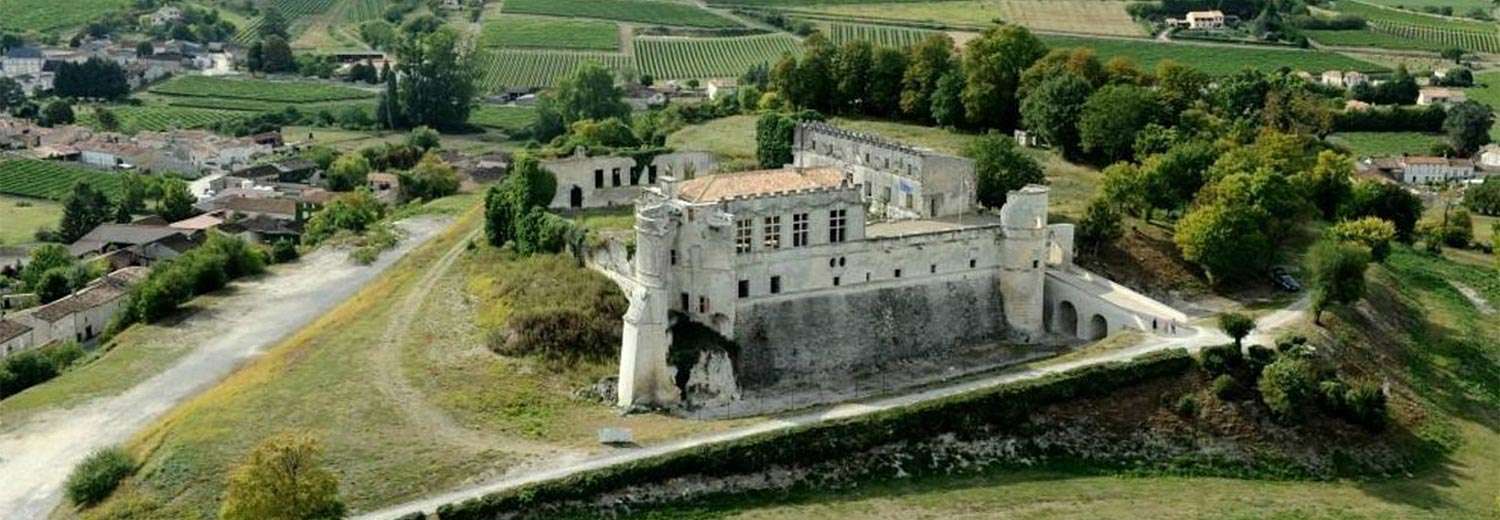GET A QUICK, FREE QUOTE
Rated 'Excellent'
on Trustpilot
ECMT International
Removals Permit
British Association
of Removers
Eco Friendly
Removals
Our Removals Service Includes…
For removals to and from Châteauneuf-sur-Charente.
Call Now 0808 175 1966
Châteauneuf-sur-Charente
An area of the Charente Department loved by the English for centuries
An introduction to Châteauneuf-sur-Charente
The English have long loved living here in Châteauneuf-sur-Charente, between Angoulême and Cognac on the banks of the Charente.
The Treaty of Brétigny, signed in 1360, ceded Châteauneuf to the English like all Angoumois. They occupied it for 20 years. The English loved this place because of its bridge.
The town has many hamlets, such as, on the right bank of the Charente: Saint-Surin, Pellegeais, Coupeaux, Coutardière, and on the left bank, Peyronnets, Jobits, Gré, Grand Gaudy, Longeville, Bois Durand, Grand Bourgloux, at Merlet, Haute Roche, Chassors, etc. as well as newer farms and subdivisions.
It hasn’t always been the idyllic town it is today.
The Saint-Pierre church was damaged during the revolts against the salt tax from 1555 to 1560 and during the wars of religion.
On 16 August 1768, a huge storm killed eight people. And in 1813 the city suffered from 34 floods.
In 2017, the town had 3,536 inhabitants, who work in a range of industries.
Wine is of course is an important activity of Châteauneuf, which is located in Petite Champagne, in the area for cognac production.
Some producers sell cognac, Pineau des Charentes and vin de pays on the property.
It’s a lively place, with a public pool, tennis court, dojo, weights and basketball room, a skate park and an entertainments room.
The parish church of St Peter is remarkable for its statuary and in particular the rider of the frontispiece, which represents the first Christian Roman emperor, Constantine, crushing paganism. This statue symbolizes the victory of Christendom over paganism by the construction of the church, since it was built on an old pagan place of worship.
Its high facade of 24 metres, divided into three vertical parts and three horizontal parts is considered to be one of the most beautiful facades of Charente. From 1846 to 1860, the architect Paul Abadie undertook the restoration of the church. The remarkable hinges, fittings, door knockers as well as the ironwork of the two glass doors giving access to the church were made in 1851 by the artistic ironworker Pierre Boulanger.
The church hides an amusing detail, a snail carved in high relief, at the end of the nave, on the altar side. The squirrel snail is a symbol of Charente, supposed to both represent the character of the inhabitants, discreet, peaceful and not inclined to get excited.
The Saint-Pierre church was a former Benedictine priory of the Abbey of Bassac.
It has been classified as a historical monument since 1862.
In the years 700-800, that is to say at the time when Pepin the Short then Charlemagne reigned, the shepherds who lived in colonies in the area built a church. The small church of Saint-Surin is an authentic and completely preserved historical monument and well worth a visit.
The manor or home of Berdeville, next to the church, was probably built in the 15th century but was subsequently radically altered and now houses the hospital. It faces the church, forming a lovely picture.
Châteauneuf had a medieval bridge over the Charente, which was for a long time the only stone bridge over the river between Cognac and Angoulême. The bridge unfortunately suffered from the drought of 1976 – the very low water level in the Charente caused the foundations on wooden piles to dry up, causing the partial collapse of a pier of the bridge. The decision was then taken to demolish the structure, and to replace it with a concrete bridge, of a larger size. The bridge has lost much of its charm, but traffic on the Charente has been improved.
The Town Hall, which was also a court and a prison, has a neoclassical architecture rare in the region, with columns, pediment, and monumental staircase.
Near the campsite, a small sandy beach on the banks of the Charente offers walkers an area for relaxation and a lovely view of Mattard Island. Le Bain des Dames offers games and a ‘meadow’ for children (tennis tables, balls, summer refreshment bar, etc.).
There are beautiful cliffs to the west of the city, where vestiges of the Neolithic period have been found, offering a superb panorama. A must-visit is the Font Qui Pisse site, which features limestone cliffs, several caves and climbing.
You can also go to two small islands, the Fuie Islands, which serve as a landing stage for river tourism.
Many picturesque sites and beautiful panoramas surround the town on the low hills of the Charente and on the river.
It is reminiscent of Provence or Tuscany, with vines, fig trees, almond trees and holm oak dotting the landscape, amid the spires of very old Romanesque churches or the roofs of winegrowers’ houses.
The GR 4 hiking trail from Royan to Grasse crosses the town and the river.
Châteauneuf-sur-Charente History
Before the 11th century, Châteauneuf was first called Bardevilla before becoming Châteauneuf due to the construction of a new castle in the 12th century.
Thanks to aerial archeology, remains of protohistoric enclosures or ditches have also been found in the town.
The Roman road between Saintes and Périgueux passes over the slopes at the southern limit of the town, its right-of-way still being used and called the Chemin Boisné.
Some Roman remains have been found mainly on the right bank, near Saint-Surin.
A cemetery of warriors has been found at Gré.
The first castle, on the Ile de la Fuie (also called Calais), an island in the Charente, probably already existed in the time of Clovis and was burned down around 1081. Its location allowed it to control navigation on the river and probably its crossing by a ford or perhaps a first bridge. It was certainly a primitive fort, in wood. After the fire, a new castle was built, in stone, on the neighbouring hillside on the left bank of the Charente, dominating the initial site, hence the name ‘new chasteau’.
Traditionally the economy of Saint-Simeux was based on mills and river transport.
At the place called Les Corbeaux, on the dam on the Charente, there are seven valves designed to receive paddle wheels (the water is too low for turbines). Wheat and oil mills were built in the 17th century. By 1898, there were only three mills, which all stopped operating during the latter half of the 20th century.
Five of these wheels drove stone grindstones to crush the grain. From around 1920, there was only one pair of millstones left for crushing barley for cattle, which stopped around 1962. The other three valves abandoned the use of millstones and installed cylinders around this year. to make wheat flour.
The last of these two mills was the Marot flour mill which was built in 1906 in place of a former wheat mill. It was enlarged in 1946 and closed in June 1971.
Removals service
Whatever your removal needs we can handle it – we’ve been moving people for nearly 50 years and know how to deal with any situation.
We are fully insured and have a great team to help reduce the stress of moving.
You can call us on 0800 917 1015 or email enquiries@armishaws.com for a quote.
Allow us to move you to or from anywhere in the UK or Europe. Our staff have been well trained in all aspects of moving homes and businesses.
Armishaws has held the BSEN 12522 certificate since 1999.
Why Choose Armishaws
- Any distance
- Any amount
- Global shipping
- Removals to France, Spain and Portugal
- Storage facilities
- Export wrapping and packing service,
- Family-owned since 1973
- Free survey and a same-day quote
Armishaws has depots all over the country, having taken over many other removals firms. While they have all kept their own branding, you can tell it’s an Armishaws company by the stellar service!
For Free Advice and a Quotation call 0800 917 1015
Why move to Châteauneuf-sur-Charente?
What’s not to like? The English have always loved it here – it’s like Fordingbridge, only French. And warmer. Oh, and there’s better food… Plus, 250k will get you a four-bed detached.
Properties in Chateauneuf-sur-Charente
Look for homes available in Chateauneuf-sur-Charente.
Transport Links
Chateauneuf-sur-Charente is located 17km west and downstream of Angoulême and 24 km east of Cognac. It is also 13 km south-east and upstream of Jarnac, 9 km south of Hiersac, 15 km from Blanzac, 16 km from Barbezieux, 20 km from Rouillac, 21 km from Archiac.
Châteauneuf is at the crossroads of several relatively important departmental roads:
The D 699 between Angoulême and Jonzac via Nersac and Archiac crosses it from east to west. It also allows you to go to Pons after Archiac.
The D 14 from Baignes to Rouillac via Barbezieux and Hiersac crosses the town from north to south, as well as the Charente by a stone bridge. The D 14 joins the N 10 to the south in the direction of Bordeaux at Pont-à-Brac (municipality of Nonaville ). It was the post office route between Paris and Bordeaux before 1760.
The D 10 from Cognac to Aubeterre via Saint-Even-les-Carrières and Blanzac runs along the left bank of the Charente and crosses the N 10 at Pétignac (municipality of Jurignac ).
The D 22, route de Jarnac to Villebois-Lavalette via Vibrac runs along the Charente on the right bank and also intersects the N 10; but the D 42 allows you to go quickly to Angoulême via the Roullet-Saint-Estèphe interchange.
Finally, a secondary road network also serves neighboring municipalities.
The Angoulême – Saintes railway line crosses the town along the Charente, and Châteauneuf has an SNCF station there. It is served several times a day by TER to Angoulême, Cognac, Saintes and Royan.
Châteauneuf also has a river stop for rental barges.
Schools near Angoulême
Chateauneuf-sur-Charente has a large secondary school, an elementary school and a private primary school.














